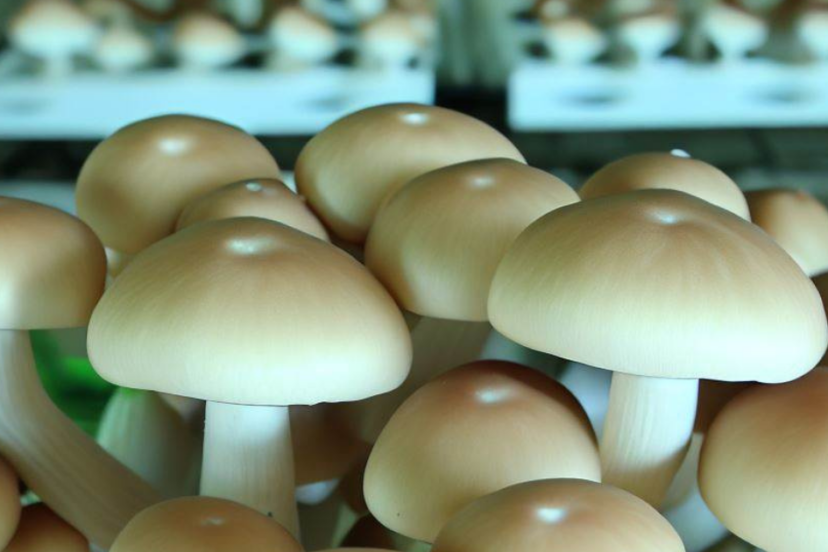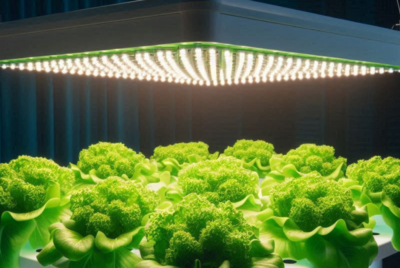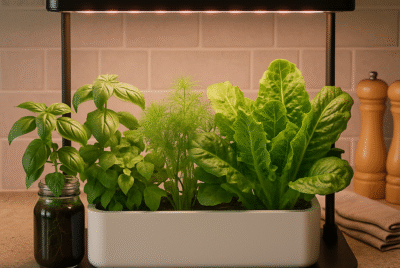Hydroponic Mushrooms: Cultivating a Fungi Fantasy
Hydroponic Mushrooms: Cultivating a Fungi Fantasy
Mushrooms, nature’s hidden treasure, have captivated the culinary world for centuries. But did you know you can grow your own delicious and nutritious mushrooms right in your home? Enter the realm cultivating hydroponic mushrooms cultivation, where you can enjoy the satisfaction of harvesting fresh fungi year-round. In this guide, I’ll share my passion for hydroponic mushrooms and provide you with practical advice to embark on your own fungi-growing adventure.
Mushrooms, with their unique flavors and health benefits, are a delightful addition to any dish. However, the idea of growing mushrooms may seem daunting to some. That’s where hydroponics comes in—a soil-less cultivation method that allows you to grow mushrooms efficiently and conveniently.
What are hydroponic mushrooms?
Hydroponic mushrooms refer to the practice of growing mushrooms using a nutrient-rich solution instead of traditional soil. This method provides precise control over growing conditions, resulting in faster growth, higher yields, and superior quality mushrooms.
Benefits of growing hydroponic mushrooms
1. Year-round cultivation: Unlike traditional outdoor mushroom cultivation, hydroponics allows you to grow mushrooms indoors regardless of the season.
2. Space-efficient: Hydroponic kit can be set up in limited spaces, making it ideal for urban dwellers or those with small gardens.
3. Higher yields: With optimized growing conditions, hydroponic mushrooms tend to produce larger and more abundant harvests.
4. Control over quality: By carefully managing the growing environment, you can ensure your mushrooms are free from contaminants and have superior flavor and texture.
4 Tips: Getting Started with Hydroponic Mushroom Cultivation
Before embarking on your hydroponic mushroom journey, it’s important to familiarize yourself with the essentials.
A. Selecting the Right Mushroom Variety
Different mushroom species have varying growth requirements and flavor profiles. Consider popular options such as oyster mushrooms, shiitake mushrooms, or white button mushrooms. Research their specific needs to ensure a successful cultivation experience.
B. Choosing the Growing Medium
Unlike traditional soil-based cultivation, hydroponic mushrooms rely on a growing medium to support their growth. Common options include perlite, vermiculite, or a mixture of straw and sawdust. Each medium has its own benefits and considerations, so carefully choose the one that suits your selected mushroom variety and available resources.
C. Creating the Ideal Growing Environment
To achieve optimal growth and development, hydroponic mushrooms require specific environmental conditions. Consider the following factors:
1. Temperature: Most mushroom species thrive in temperatures between 60-75°F (15-24°C). Maintain a consistent temperature throughout the growing process to promote healthy growth.
2. Humidity: Mushrooms prefer high humidity levels, typically around 80-90%. Use misters, humidifiers, or other methods to keep the humidity within the desired range.
3. Light: Mushrooms don’t require direct sunlight but do need some ambient light. Indirect natural light or artificial grow lights can be used to provide the necessary illumination.
Ventilation: Proper air circulation is crucial to prevent the buildup of carbon dioxide and excess moisture. Ensure there is adequate ventilation in your growing space.
D. Acquiring Mushroom Spawn
Mushroom spawn, also known as mycelium, serves as the starting material for growing mushrooms. It contains the root-like structure from which mushrooms develop. You can purchase spawn from reputable suppliers or consider producing your own using spores or tissue cultures.
Setting Up the Hydroponic Mushroom System
Now that you have a good understanding of the basics, it’s time to set up your hydroponic mushroom system.
A. Designing the Growing System
Consider the available space and your desired scale of production when designing your hydroponic mushroom system. Options include stacked shelves, growing racks, or customized grow boxes. Ensure the system allows for easy access and maintenance.
B. Building the Growing Containers
Choose suitable containers or trays that provide a clean and controlled environment for mushroom growth. Consider using plastic or metal containers with proper drainage holes to prevent waterlogging.
C. Installing Lighting and Ventilation
If your growing space lacks sufficient natural light, install appropriate artificial grow lights. Use full-spectrum LED lights that mimic natural sunlight. Additionally, set up fans or ventilation systems to maintain fresh air circulation.
D. Preparing the Nutrient Solution
Hydroponic mushrooms derive their nutrients from a specially formulated solution. Prepare the nutrient solution according to the specific requirements of your mushroom variety. It typically consists of water, nitrogen, phosphorus, potassium, and micronutrients. Follow the manufacturer’s instructions for accurate measurements.
Planting and Growing Hydroponic Mushrooms
With your hydroponic mushroom system in place, it’s time to start the growing process.
A. Preparing the Growing Medium
Moisten the chosen growing medium and ensure it’s well-drained. Fill the containers or trays with the moistened medium, leaving sufficient space for mushroom growth.
B. Inoculating the Growing Medium with Spawn
Carefully distribute the mushroom spawn on the surface of the growing medium. Gently press the spawn into the medium to ensure good contact. Cover the containers with plastic or a humidity dome to create a moist environment for the mycelium to colonize.
C. Maintaining Optimal Conditions for Growth
Monitor and maintain the temperature and humidity levels within the recommended range for your mushroom variety. Mist the growing area regularly to maintain high humidity. Avoid direct spraying on the mushrooms to prevent damage.
D. Managing Nutrient Levels and pH
Regularly check and adjust the nutrient solution to maintain optimal nutrient levels. Monitor the pH of the solution using a pH meter and adjust it if necessary. Different mushroom species have different pH preferences, so consult specific guidelines for accurate adjustments.
Harvesting and Enjoying Hydroponic Mushrooms
As your hydroponic mushrooms mature, it’s time to reap the fruits of your labor.
A. Monitoring Mushroom Development
Monitor the progress of your hydroponic mushrooms as they develop. Keep an eye on their size, color, and texture to determine the right time for harvesting. Different mushroom varieties have specific growth stages and indicators of readiness, so refer to the guidelines for your chosen species.
B. Harvesting the Mushrooms
When your mushrooms reach the desired maturity, gently twist or cut them at the base of the stem to harvest. Harvesting should be done when the mushroom caps are fully expanded but before they start to release spores. Use a clean, sharp knife or scissors to ensure a clean cut and minimize damage to the surrounding growing medium.
C. Storing and Cooking Hydroponic Mushrooms
To store your freshly harvested hydroponic mushrooms, gently brush off any dirt or debris and place them in a paper bag or breathable container. Store them in the refrigerator, preferably in a paper towel-lined container, to maintain freshness. Hydroponic mushrooms have a shorter shelf life compared to store-bought mushrooms, so it’s best to consume them within a few days.
When it comes to cooking hydroponic mushrooms, the possibilities are endless. Sauté them with garlic and butter, add them to soups and stews, or use them as a flavorful topping for pizzas and pastas. The freshness and quality of your homegrown mushrooms will elevate any dish.
D. Enjoying the Fruits of Your Labor
Growing hydroponic mushrooms not only provides you with a sustainable source of fresh and flavorful fungi but also offers a rewarding and fulfilling experience. Enjoy the satisfaction of cultivating your own food and sharing it with family and friends. Experiment with different recipes and explore the diverse world of mushrooms.
Troubleshooting Common Issues
While hydroponic mushroom cultivation can be a rewarding endeavor, it’s important to be aware of potential challenges and how to overcome them.
A. Controlling Pests and Diseases
Monitor your growing system regularly for signs of pests or diseases. Common issues include mites, fungi, and mold. Maintain proper cleanliness and hygiene, and consider using organic pest control methods if necessary.
B. Dealing with Nutrient Imbalances
Imbalances in nutrient levels can affect mushroom growth and overall health. Regularly check and adjust the nutrient solution based on your mushroom variety’s specific requirements. Proper monitoring and adjustments will help maintain optimal growth conditions.
C. Addressing Temperature and Humidity Fluctuations
Fluctuations in temperature and humidity can impact mushroom growth and development. Ensure your growing environment remains stable by using temperature and humidity controllers or implementing insulation measures to regulate the conditions.
D. Solving Mushroom Growth Problems
If you encounter issues such as slow growth, abnormal development, or low yields, consider factors such as lighting, ventilation, nutrient levels, and pH. Adjust the growing conditions accordingly and seek advice from experienced growers or mushroom cultivation resources.
Conclusion
Embarking on the journey of hydroponic mushroom cultivation opens up a world of fresh, flavorful, and sustainable fungi right at your fingertips. With careful attention to the growing process, you can enjoy the satisfaction of harvesting your own hydroponic mushrooms throughout the year. By following the guidelines and recommendations shared in this article, you’ll be well on your way to becoming a successful hydroponic mushroom enthusiast. So, dive into the fascinating world of hydroponics and savor the delights of homegrown hydroponic mushrooms.
FAQs
1. Can I grow hydroponic mushrooms without any prior gardening experience?
Absolutely! Hydroponic mushroom cultivation is beginner-friendly and doesn’t require extensive gardening knowledge. With proper research and following the guidelines, anyone can successfully grow hydroponic mushrooms.
2. What are the most common problems that beginner hydroponic mushroom growers face?
Common issues for beginners include maintaining the correct temperature and humidity levels, managing nutrient solutions, and preventing pests and diseases. However, with proper guidance and attention to detail, these challenges can be overcome, and your hydroponic mushroom cultivation will thrive.
3. Can I reuse the growing medium for subsequent mushroom crops?
It’s generally recommended to replace the growing medium after each crop to prevent the accumulation of pathogens and ensure optimal growing conditions. However, some growers may sterilize or compost the used medium to minimize waste and environmental impact.
4. How long does it take for hydroponic mushrooms to grow?
The time it takes for hydroponic mushrooms to grow depends on the mushroom variety and specific environmental conditions. Typically, mushrooms can be harvested within a few weeks to a couple of months after inoculation, but it’s best to refer to the guidelines for your specific mushroom species.
5. Can I use hydroponic mushroom cultivation as a commercial venture?
Certainly! Hydroponic mushroom cultivation has gained popularity in commercial settings due to its controlled environment, high yields, and year-round production capabilities. However, it’s essential to conduct thorough market research and develop a solid business plan before venturing into commercial hydroponic mushroom cultivation.
6. Can I grow multiple mushroom varieties together in a hydroponic system?
While it’s possible to grow multiple mushroom varieties in a hydroponic system, it’s crucial to consider their specific requirements for temperature, humidity, and nutrient levels. Some varieties may have different growth rates or prefer distinct conditions, so it’s often recommended to separate them into different growing containers or systems.
Remember, hydroponic mushroom cultivation is an exciting and rewarding journey. Embrace the learning process, stay attentive to your mushrooms’ needs, and enjoy the bountiful harvest of delicious and nutritious homegrown hydroponic mushrooms. Happy growing!
*We may earn a commission from purchases made through our links, at no cost to you. This does not affect our product recommendations. Please see our disclosure to learn more.




